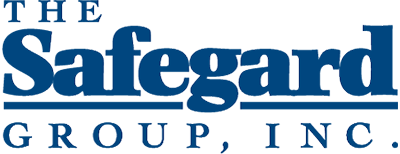
- Claims & Risk Management
- No comments
You can take measures to reduce the physical strain on your employees by practicing and encouraging ergonomics, the science of designing tasks to fit the physical make-up of the workers. Proper lifting equipment, training, and modification of tasks will prevent injuries and reduce WC claims.
Health care workers, especially those employed by nursing homes, perform a variety of lifting tasks that put extreme strain on their bodies. Often, an employee must physically support and move residents who are larger and heavier than he or she can bear. As a result, these workers are at high risk for developing job-related injuries. Nursing aides, orderlies and attendants have the highest incidence rate of musculoskeletal disorders, two times greater the average rate of all occupations. A recent study showed that health care workers sustained 47,840 injuries over a period of a year that required days away from work, the second highest of any occupation. Overexertion was the leading cause or exposure for those injuries.
The Benefits of Portable Mechanical Lifts
As a general rule, one full-body lift should be provided for every eight to 10 non-weight bearing residents. The facility should also have one stand-up lift for approximately every eight to 10 partially weight bearing residents.
Both types of machines cost about $3,000 to $6,000, totaling approximately $50,000 per facility. This may seem to be a costly investment; however, cost-benefit analysis reveals that the initial investment in lifting equipment and employee training on the machines is recovered in two to three years through reductions in workers’ compensation expenses.
Safety Program
To reduce the risk of employee injuries as a result of patient handling, health care facilities should design a safe handling program to include the following:
- Continual training on injury prevention, covering risks, causes and symptoms of musculoskeletal disorders
- Practicing methods for transferring and lifting resident
- Procedures for detecting and reporting early signs of back pain
Facility Analysis
In addition to establishing a safety program, you should conduct an analysis of the facility to identify any potential hazards. By observing employees as they tend to residents, administering surveys and discussing the issue with employees, you can detect which tasks pose potential dangers. Your facility should also analyze prior recorded injuries to uncover any reoccurring problems.
Expert Guidance
Beyond these administrative controls, also consider hiring an expert in musculoskeletal disorders to care for injured employees. This person should be responsible for the following:
- Recording injuries and illnesses
- Identifying injuries and providing treatment early on
- Establishing no-lifting tasks for injured employees until they recover
- Monitoring injured employees and determining when they can return to their normal duties
Guidelines for Lifting
As part of your educational programs, provide employees with specific guidelines for lifting residents to ensure that it is done correctly and safely. Some guidelines include the following:
- Maintain good balance while transferring residents
- Lift the person close to your own body
- Lift residents with another employee present, especially when tending to residents who have fallen
- Do not exceed the recommended lifts per worker per day
- Do not use equipment that is unfamiliar until properly trained
- Avoid manually lifting when possible—use the provided lifting equipment
More Tips for Lowering WC Claims
These tips were provided by The Safegard Group, looking for more resources on lowering WC claims? Contact us today via our contact page or at (610) 892-7688.

